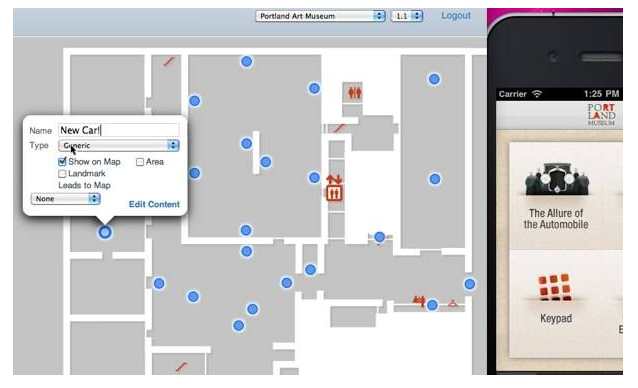**I. Project Overview**
**1.1 Project Summary**
Currently, many large shopping malls and indoor venues provide only basic floor plans, which can be challenging for users to navigate quickly and efficiently. To address this issue, we have developed a multi-functional indoor navigator using the iNEMO platform from STMicroelectronics. This solution is designed to offer a more user-friendly and convenient navigation experience in complex indoor environments.
The system utilizes the STEVAL-MK1062V2 development board, which integrates a three-axis gyroscope to measure angular velocity and determine direction. A linear acceleration sensor, combined with a geomagnetic module, helps track displacement. Additionally, temperature and pressure sensors are used to enhance positioning accuracy. The collected data is transmitted via Wi-Fi to an Android smartphone, where it is processed and displayed in real time.
Compared to traditional floor plans, our navigator provides more personalized, efficient, and intuitive navigation services, especially for cross-floor movement. It allows users to find their way faster, avoid confusion, and save time during their visits.

**1.2 Project Background / Motivation**
As large shopping centers and entertainment complexes continue to expand, they often include a wide range of stores, restaurants, entertainment zones, and other facilities. These spaces attract a lot of visitors but also create common navigation challenges:
- How can users quickly find their way without relying on static floor maps?
- How to determine the shortest path between different floors?
- What if someone gets separated from their group? How to locate each other quickly?
- In case of emergencies, how to evacuate efficiently?
These issues highlight the need for a smarter, more intelligent navigation tool that can guide users accurately and quickly. Our project aims to develop such a system that not only improves the user experience but also reduces the time spent on navigation.
For the computing and display module, we chose an Android smartphone due to its portability, fast processing power, and widespread use. Android’s open ecosystem also makes it ideal for integrating various sensors and developing custom applications. With over 1 billion active devices, Android offers a strong foundation for our project.
**Advantages of Android:**
- **Openness:** Developers and manufacturers can easily join the Android ecosystem, leading to a vast pool of talent and innovation.
- **Freedom:** Users enjoy more flexibility in connecting to networks and accessing services without carrier restrictions.
- **Hardware Diversity:** A wide range of devices with unique features ensures compatibility and scalability.
- **Developer-Friendly:** Third-party developers benefit from a flexible and open environment, allowing for rapid app development.
- **Google Integration:** Seamless access to Google services enhances the overall user experience.
Based on these advantages, we have chosen the Android platform for data processing and visualization. We also plan to add features like voice recognition and audio guidance, similar to a “guide dog†function, to further improve usability.
**II. Requirements Analysis**
**2.1 Functional Requirements**
1. Real-time collection of environmental data to help users understand their surroundings.
2. Accurate tracking of user speed to update their location status dynamically.
3. Map storage and updating capabilities to guide users based on their current location and destination.
4. Wireless communication between the experiment board and the Android device via Wi-Fi to ensure timely data transfer.
5. A clear and organized display of all information on the Android platform.
6. A calibration feature to improve positioning accuracy by recognizing reference points.
**2.2 Performance Standards**
1. Temperature measurement error should not exceed 0.5°C.
2. Positioning accuracy should be within 10 meters at a distance of 200 meters after correction.
3. Road and direction identification must be accurate and reliable during navigation.
4. The system should correctly recognize stairs and elevators, ensuring safe navigation.
5. It should handle complex indoor environments and intelligently choose the best route when multiple options are available.
6. Real-time location updates on the mobile device should be smooth and delay-free.
Customized Engineering Ceramics
Customized Engineering Ceramics,Ceramic Plate,Machinery Ceramic Part,Metalized Ceramic Base
Yixing Guangming Special Ceramics Co.,Ltd , https://www.yxgmtc.com
